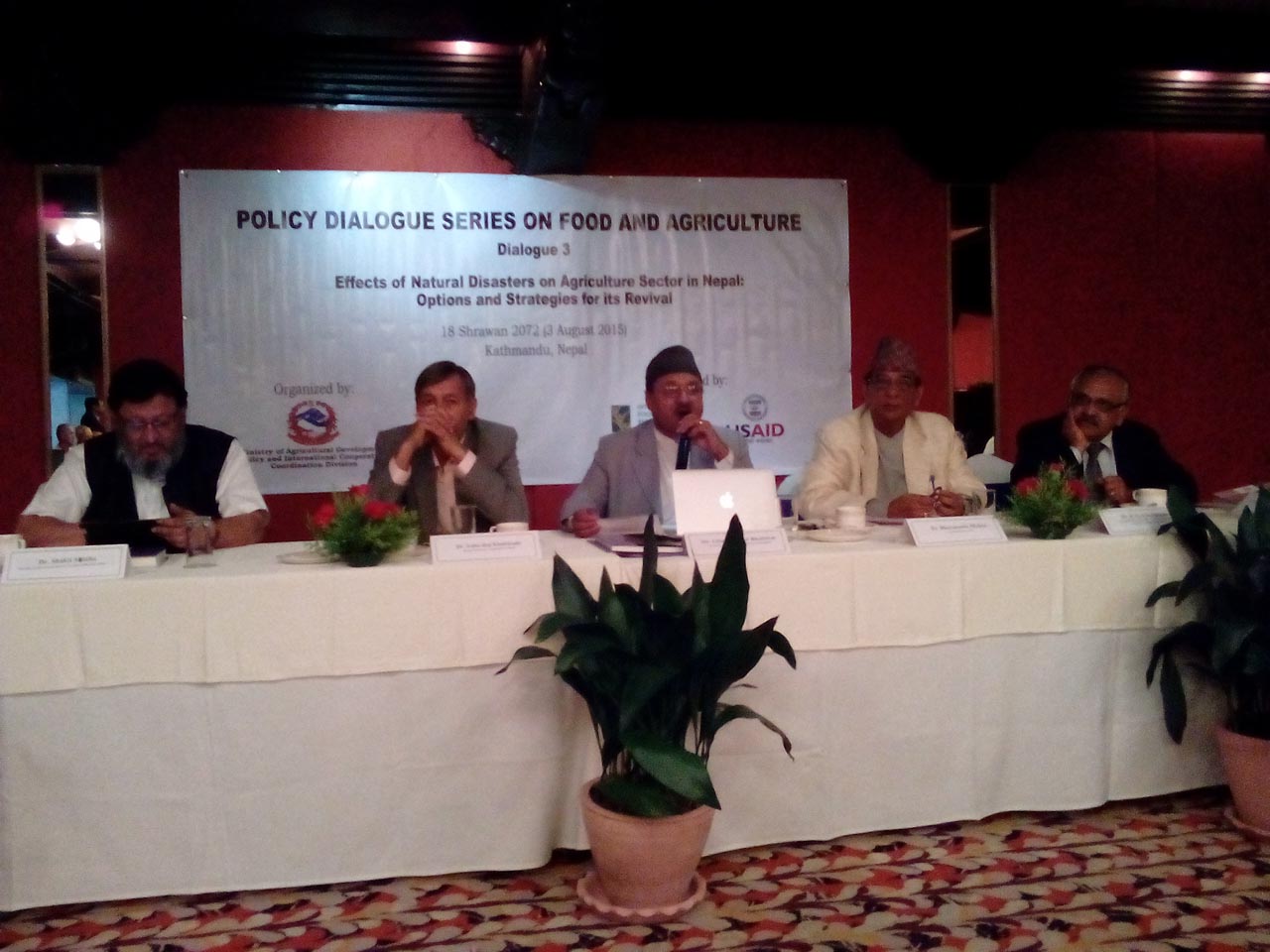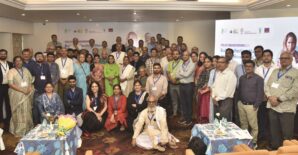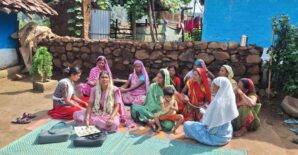
Participants at the policy dialogue
In April 2015, Nepal experienced a catastrophic earthquake of 7.6 magnitude, followed by more than 300 aftershocks causing about 9000 casualties and 22,300 injuries. The earthquake not only made a significant impact on the country’s immediate food and nutritional security situation, but caused damage during the harvest season for wheat and maize, with a likely resulting loss in food stocks.
In Kathmandu earlier this month, the Ministry of Agricultural Development (MoAD) and the International Food Policy Research Institute (IFPRI) organized a one day dialogue on the Effects of Natural Disasters on Agriculture Sector in Nepal: Options and Strategies for its Revival.The aim of the dialogue was to deliberate on the nature and pattern of the impact of natural disasters on agriculture-based livelihood, the evidence and experiences of responding to loss of livelihood, and lessons that Nepal could learn while striving to chart out the pathways to its recovery.
Participants included policymakers, donors, researchers, and representatives from corporations, the farming community, civil society, and development organizations from Nepal and India.
The discussion brought forth a number of key outcomes:
Livelihood loss in the agriculture sector emanates from the loss of productive assets (such as land and livestock), farm infrastructures (such as roads, irrigation and storage structures), inputs (such as seeds), and markets (for output and inputs).
- Re-linking farmers, especially those who are illiterate, unskilled and immobile, with markets is crucial for the revival strategy.
- Employment guarantee schemes could be useful for immediate food security as well as for market revival, providing cash in hand in the short run. The revival strategy should also address the issue of labor shortage by promoting agri-mechanization. For long-term impact, due consideration should be given to improving the terms of trade in agriculture.
- Natural disasters have a significant impact on agriculture, given the nature of its technicality, demography, and vulnerability. Agriculture sector-specific disaster management policy and guidelines are needed.
- Institutions and civil service must make efforts to work together. Capacity and accountability are important tor institutions to be effective. At the local level, it is important to mobilize community based organizations, particularly in the absence of elected representatives in the local government bodies.
This dialogue is third in the series of ongoing policy dialogues on food and agriculture organized by IFPRI under the Policy Reform Initiative Project (PRIP) in Nepal. Past dialogues in the series are (a) Public Expenditure in Agriculture (February 06, 2015) and (b) Potential Effects of India's Budget 2015-16 on Nepalese Agriculture and Policy Implications for Nepal (April 01, 2015).



